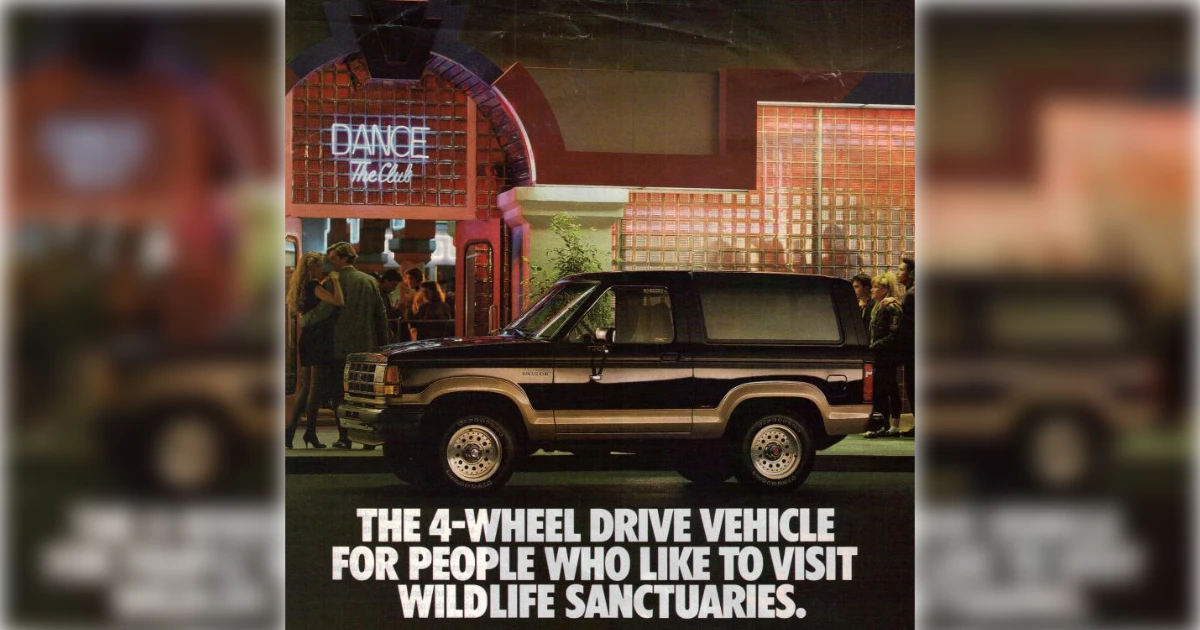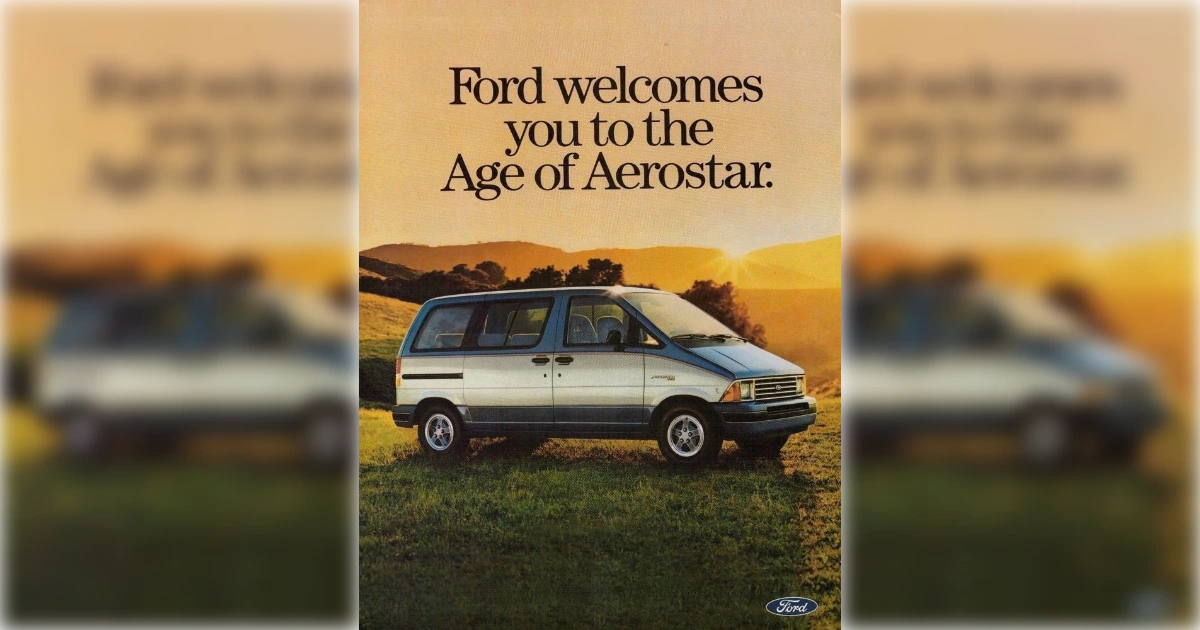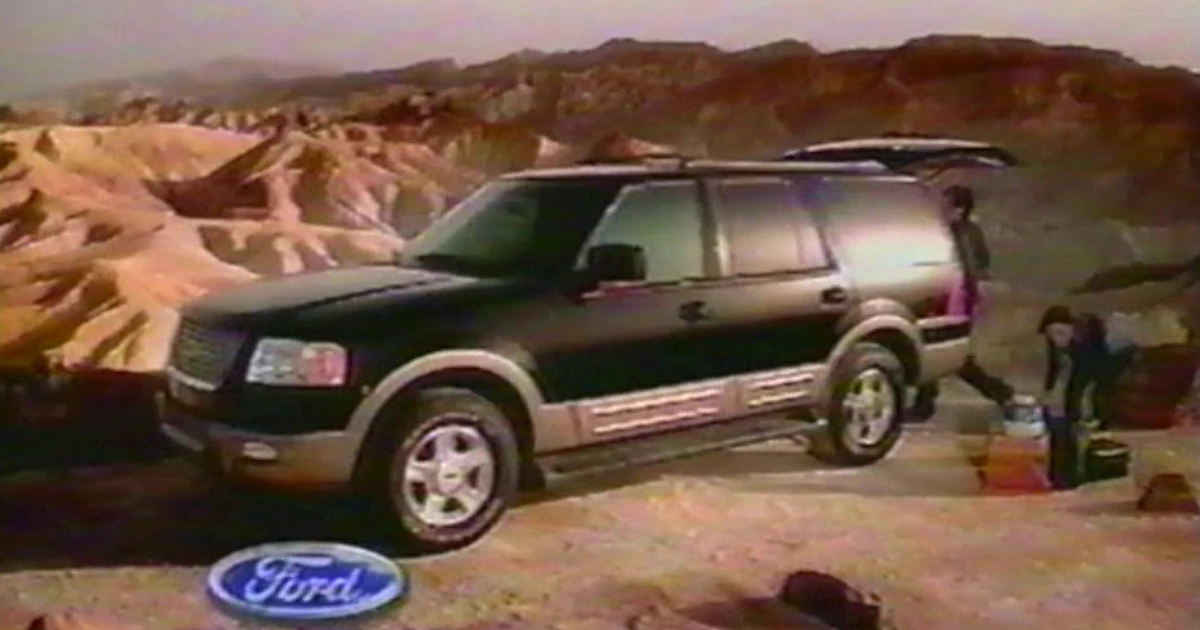.webp)
© History Oasis
.webp)
Discontinued: 1996
The Ford Bronco was America's first true sport utility vehicle, designed to challenge the Jeep CJ-5's dominance in the off-road market. Ford built the Bronco on its own dedicated chassis, giving it exceptional capability and the rugged character that defined an entire vehicle category. The Bronco evolved through five generations, growing from a compact off-roader into a full-size SUV based on F-Series truck architecture. Despite its popularity, changing consumer preferences toward four-door family vehicles ultimately sealed the Bronco's fate, as buyers increasingly demanded more passenger space than the two-door format could provide. The Bronco has recently been relaunched with a new and improved design.

Discontinued: February 1990
The Ford Bronco II represented Ford's attempt to recapture the original Bronco's compact dimensions while competing against the emerging small SUV segment. Built on the Ford Ranger pickup platform, the Bronco II offered genuine four-wheel-drive capability in a more manageable size. However, safety concerns plagued the vehicle throughout its production run, as its narrow track width and high center of gravity contributed to rollover incidents. Ford ultimately discontinued the Bronco II to make way for the larger, more stable Explorer, which would become one of America's best-selling SUVs.

Discontinued: August 22, 1997
The Ford Aerostar was Ford's first minivan, challenging Chrysler's early dominance in the family van market. Unlike its front-wheel-drive competitors, the Aerostar used rear-wheel-drive architecture borrowed from the Ford Ranger, making it the only minivan capable of serious towing. Ford built the Aerostar with truck-like durability while wrapping it in aerodynamic bodywork that achieved an impressive drag coefficient for its size. The vehicle pioneered all-wheel-drive in the minivan segment and became the first minivan powered exclusively by V6 engines, but declining sales and the introduction of the front-wheel-drive Windstar sealed its fate.

Discontinued: September 30, 2005
The Ford Excursion is the largest SUV ever mass-produced, stretching nearly 19 feet long and weighing close to 8,000 pounds. Ford designed the Excursion to compete directly with heavy-duty Chevrolet Suburbans, building it on the same chassis as the F-250 Super Duty pickup truck. The vehicle offered unmatched towing capacity and interior space, accommodating up to nine passengers while maintaining truck-grade capability. Environmental criticism and poor fuel economy during rising gas prices contributed to sluggish sales, forcing Ford to abandon the project after just six model years.

Discontinued: 2019
The Ford Flex challenged conventional SUV design with its distinctive boxy styling and station wagon proportions, creating a unique alternative to traditional three-row vehicles. Ford built the Flex on the same platform as the Explorer but lowered its height and emphasized cargo capacity over ground clearance. The vehicle's retro-futuristic appearance, inspired by classic woody wagons, earned it a devoted following among buyers seeking something different from cookie-cutter crossovers. Despite offering impressive interior space and available twin-turbocharged power, the Flex never achieved Ford's sales targets, leading to its discontinuation. Afterward, Ford refocused on more conventional designs.

Discontinued: April 26, 2024
The Ford Edge pioneered the midsize crossover segment, positioning itself between compact SUVs and full-size three-row vehicles when it debuted for the 2007 model year. Ford designed the Edge to offer car-like handling with SUV practicality, building it on a platform shared with the Ford Fusion sedan. The vehicle's sleek styling and refined driving dynamics attracted buyers seeking a more sophisticated alternative to truck-based SUVs. After nearly two decades of production, Ford discontinued the Edge as part of its strategic shift toward electric vehicles, with the Oakville Assembly Plant being retooled for EV production.